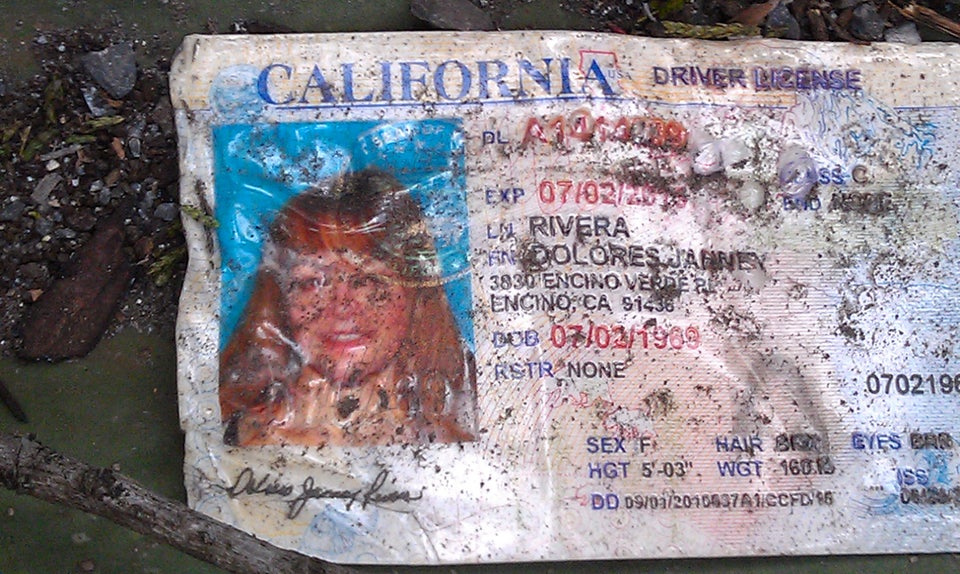
When the plane carrying Mexican-American singer Jenni Rivera disappeared in Mexico this weekend, the mostly Latino fans who have watched her rise from nightclub queen to venue-filling star, tuned into her reality shows and bought her cosmetics responded with fear, grief and anxiety.
On Twitter, Facebook and her shows’ fan sites, they posted their hopes and prayers. But when authorities discovered the remnants of Rivera’s plane with no survivors, stories about Rivera appeared on Telemundo and Univision, the nation’s leading Spanish-language networks, as well as CNN, MSNBC, ABC and near the top of The New York Times website. The Wall Street Journal tracked a posthumous surge in her music sales. And Sen. Marco Rubio (R-Fla.) spoke about Rivera’s life and death on the Senate floor.
In a country where Latinos make up a fast-growing share of the population, consumer market and electorate, the sudden death of a California-born songstress famous for distinctly Mexican-style music amounts to big, mainstream news.
“It’s really amazing because I have seen it on the front page of every newspaper I have seen today,” said Federico Subervi, director of the Center for the Study of Latino Media and Markets at Texas State University. “It’s a recognition that Latino popular culture is important and influential in this country.”
In 1995, when Texas-born, Mexican-American singer Selena Quintanilla Perez, 23, was shot and killed by the former president of her fan club, stories about the young woman known as the Tejano music queen took days to reach the nation’s biggest newspapers, Subervi said. NBC’s Tom Brokaw referred to her as the “Mexican Madonna.”
But fans in Latin America and parts of the Southwest heard about the singer’s death on local Spanish and English-language radio and television within hours. Two days after her death, The New York Times published a story describing the crowds gathering in Corpus Christi, Texas, where she was killed. Mourners began forming a line at 4 a.m. for an open-casket viewing of the singer’s body that ultimately included some 30,000 to 40,000 people.
Following Selena’s death, there were other hints of the growing Latino influence on American culture. Her posthumous album and its combination of Spanish and English-language music debuted at number one on the U.S. “Billboard 200,” making her the first Latino singer to have a number-one debut on the chart.
Today, news moves at a faster pace and some of the same social networks that people used to follow Rivera's career also helped to spread news of her death.
There are also more reporters working inside major news organizations who are Latino or listen to Mexican-influenced music, Subveri said. Then there’s the Internet, making it much easier for even the uninitiated to listen to and quickly describe Mexican-influenced music.
Selena’s Tejano songs with their accordion-driven melodies and her love-centered pop music were quite different than Rivera’s bandas, narcocorridos, and more recently, ballads about the rougher side of life, love, marriage and the enduring strength of women.
Bandas lean on a larger, louder brass band sound with tubas, horns, clarinets, cymbals and drums, said Chris Strachwitz, president of the California-based Arhoolie Records and Foundation, the site of one of the nation’s largest Mexican and Mexican-influenced music repositories. Bandas’ recurrent themes have lead some musicologists to describe it as a sung hybrid of country and rap.
Banda music began during the French intervention in Mexico when government officials established bandas de policías (police bands) -- mostly brass and percussion players -- in nearly every city and town, Strachwitz said. The groups remained popular with the working class and poor who live in Sinaloa, a Western Mexican state, and a few other regions. About 100 years later, when immigrants from these regions began to stream into the U.S. in the 1980s, they brought their favorite music with them.
Narcocorridos also draw heavily on accordions, but often feature real stories about actual events, with locations and dates on which major political protests, revolutionary battles, drug trafficking and other criminal activities occurred, according to Strachwitz.
Rivera, 43, was one of just a few women to succeed in the two male-dominated Mexican-music genres, said Elijah Wald, a music historian who wrote the 2002 book, Narcocorrido: A Journey into the Music of Drugs, Guns, and Guerrillas. Wald first interviewed Rivera in 1998.
Rivera built her reputation as a brassy and tough but glamorous young, divorced, single mom, who saw two husbands go to prison and endured the revelation that one of the men had molested their child.
Early on, while still performing in clubs, Rivera made her tough-girl act part of the show, taking shots of cognac handed up from the audience. Often, she feigned the inability to drink more, then uttered her trademark, “Ay, no puedo (Oh, I can’t),” followed by another fan-sponsored shot and a still lively show, Wald said. Later, when her fame extended beyond Los Angeles, about 90 percent of her audience consisted of Latinas who identified with her life and her struggles, according to Wald. Rivera's shows started with her in a black baseball cap and jeans, when she would sing bandas and narccorridos. As the evening progressed, Rivera would change into ball gowns and offer mariachi tunes and ballads.
“Her act was a cross between gangster chick and Celine Dion and Paquita la del Barrio, you know the whole man-hating, we girls are in it together thing,” Wald said. “Her entire act was you can have it all but with no compromise.”
“She was tough and so funny,” Wald, continued. “She did not slim down to look like a fashion model or avoid wearing the dresses she would have worn if she had slimmed down to look like a fashion model. She was so affirming for her audience and that was what was so great about Jenni Rivera. She was the proof that they were important and they mattered and they were beautiful.”
But Wald suspects that the story of Rivera’s death may have been reported widely because she had produced and appeared on two mostly English-language reality shows (with Spanish subtitles) on Mun2, a Telemundo-affiliated bilingual cable network owned by NBC. ABC was also developing a sitcom around Rivera, The New York Times reported Monday.
“I think she deserved this kind of coverage,” Wald said. “She was no pop princess, manufactured and made. But, I am assuming that the fact that she was in the pipeline for ABC meant that there were press people connected to her who put the word out in places it might not have otherwise been.”
Even Subervi is willing to concede that wide coverage of Rivera’s death may not be a clear sign of newfound regard for Mexican-influenced art.
Some organizations might have instead looked to new measures, Subervi said: what’s trending on Twitter and Google. Others may be working to embrace America’s new demographic reality, he said.
“This is my cynical side but I find the Marco Rubio thing very interesting,” he said. “I have to wonder if he would have said that if Republicans weren’t trying to reach Latinos because they did so poorly in the last campaign. Now his glowing statements about Rivera are part of the official record.”
Rubio described Rivera as a “huge star,” and said his mother was among her mourning fans.
